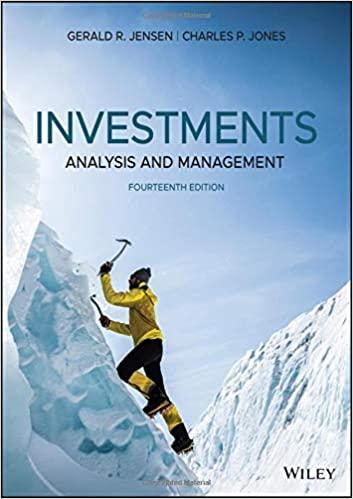Question
Hume Books (Hume's) is a multi-divisional book company with three key divisions: Publishing : This division publishes educational textbooks, adult fiction and non-fiction books, as
Hume Books (Hume's) is a multi-divisional book company with three key divisions:
Publishing: This division publishes educational textbooks, adult fiction and non-fiction books, as well as children's books. Publishing provides books to outside bookstores as well as those in the Retail division of Hume's. Currently, books are published in one or more of three main forms: hardcopy, e-books or audiobooks.
Retail: Hume's owns a number of specialist bookshops itself with a focus on developing close links with individual customers. As well as owning its own shops, Hume's has also taken an ownership stake in a number of specialist retail bookstore chains.
Technologies-based division: This division focuses on technological applications and works closely with the publishing division, in particular. It is also experiencing increasing demand from external book and educational organisations.
Historically, Hume's has sought to provide significant autonomy to the divisional managers and evaluated the performance of the divisions on the basis of financial-based performance metrics in the form of residual income (RI). Under the watchful eye of new chief financial officer (CFO) - Debra Adams - the company has embarked on a new performance management system. Underpinning the new system is a balanced scorecard, which has been developed from a strategy map. The first year of the scorecard's use has recently completed and it is now time for a review. The scorecard including target and actual performance across the metrics for 2022 is provided in Exhibit 1. The scorecard has been constructed using both common metrics (same metrics for all three divisions) and unique metrics [metrics specific to usually just one of the divisions].
At the first review meeting several items emerged that would have Adams and her accounting team investigate further. A snapshot of parts of the conversation is provided below:
On the connection between metrics
Environmental manager (Ellie Raimodo): ".... These strategy maps used in developing the scorecard look good, but how do they help us here at Hume....Can somebody provide me a clear explanation/illustration of the benefits...."
On use of the scorecard in the reward system
CFO (Debra Adams): ".... We now have this scorecard of performance metrics; I wonder if it is time to think about using the scorecard as the basis of a new bonus system?"
Senior accountant (Patricia Fergus): "...well, that worries me a bit, how could we possibly make that work?...better let me give that some thought and the chance to explore best practice..."
Patricia gave this more thought, and decided to establish what she thought would be suitable criteria to guide the development of a suitable bonus plan based on scorecard performance. Patricia came up with four criteria that she thought could be used to workshop and test a new bonus plan. The four criteria were:
- Good performance should be rewarded and poorer performance should be penalised
- The bonus pool should be based on organisational performance
- All scorecard metrics should be included
- It is not necessary that each divisional manager is automatically eligible for a share of the bonus pool.
On the use of subjectivity in evaluating performance
CFO (Debra Adams) recently attended a public lecture on the topic of subjectivity in performance evaluation. Adams is now wondering if divisional managers' performance and access to any bonuses, could be evaluated on the basis of objective measures (as reflected in scorecard performance relative to target) as well as subjective ratings performed by senior managers from head-office. Adams provided a few draft notes (see image below) as to how this might work.
- In the conversation snapshot On the connection between metrics, Environmental manager (Ellie Raimodo) makes reference to the use of a strategy map in the development of the scorecard. Respond to her comments by providing an explanation/illustration of the benefits of a strategy map to Hume's in the development of the balanced scorecard. You must specifically use the case facts of Hume's to demonstrate. 6 marks
- Assume Hume's decides to go ahead with Patricia's idea to workshop suitable bonus plans based on scorecard performance. Use the first-year results provided to construct a suitable bonus plan based on [but not limited to] Patricia's four criteria. Using the scorecard results, illustrate your plan by calculating the bonus that would be assigned to each divisional manager. 8 marks Note: a spreadsheet is included in the supplementary materials to assist. However, do not upload a spreadsheet to the answer space. An image will be sufficient.
- Refer to the conversation snapshot and related image above on the use of subjectivity in evaluating performance. Present a short argumentative case in favour of introducing subjective evaluations, as described by Adams into the performance evaluation and reward system at Hume's. Illustrate using the case facts of Hume and your suggested bonus plan developed in part (b). 6 marks
Step by Step Solution
There are 3 Steps involved in it
Step: 1

Get Instant Access to Expert-Tailored Solutions
See step-by-step solutions with expert insights and AI powered tools for academic success
Step: 2

Step: 3

Ace Your Homework with AI
Get the answers you need in no time with our AI-driven, step-by-step assistance
Get Started


